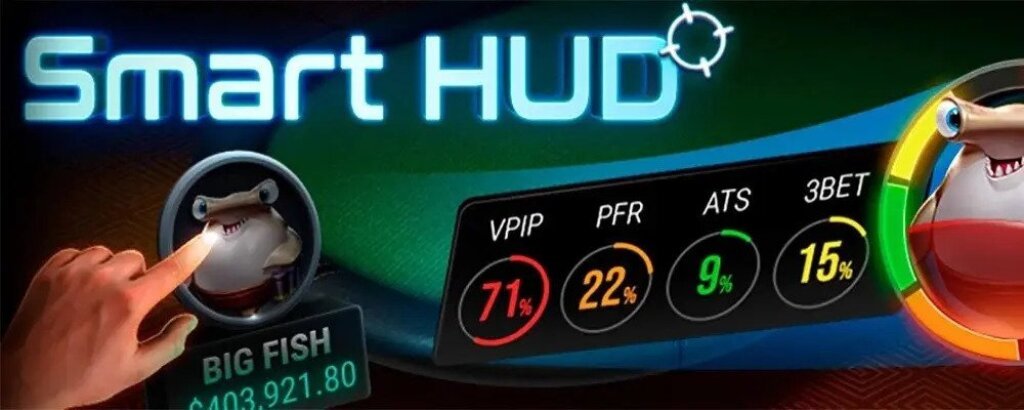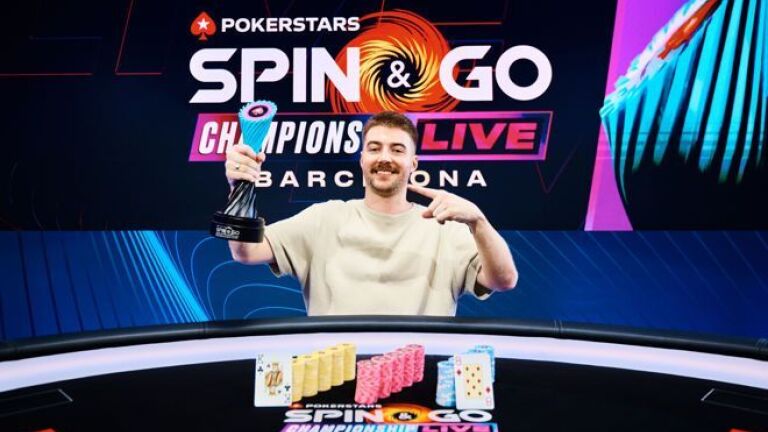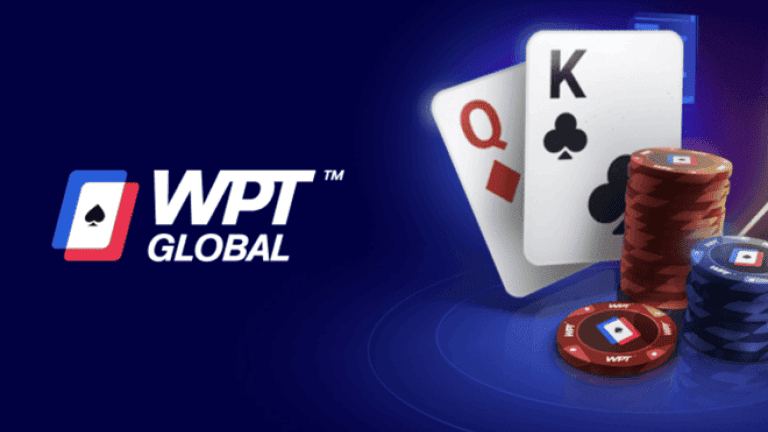GGPoker’s built-in Smart HUD is available to all players and displays essential preflop statistics in real time. While it’s more limited than traditional third-party HUDs, its conscious use can still give you a significant edge—and help increase your profitability.
In this article, we’ll explain how to read the four key stats offered by the Smart HUD, how to identify common player types based on those stats, and how to adjust your strategy accordingly.
What Does the Smart HUD Show?
The Smart HUD displays the following four preflop statistics:
- VPIP – Voluntarily Put Money In Pot: How often a player voluntarily puts money in the pot preflop, through a call or raise (not including blinds).
- PFR – Preflop Raise: How often a player raises first in preflop.
- ATS – Attempt to Steal: How often a player attempts to steal the blinds from the cutoff, button, or small blind—if no one has entered the pot before them.
- 3BET: How often a player re-raises preflop after a previous raise.
It also shows the number of hands you've played together, which helps evaluate how reliable the stats are. If you only have a few hands, the data should not yet be considered relevant.
Optimal Stat Ranges
The following ranges represent a balanced regular’s preflop behavior and are generally typical at NL25–NL50 cash game stakes. At lower limits, players tend to be tighter; at higher limits, they tend to be more aggressive.
| Stat | Optimal Range |
|---|---|
| VPIP | 18–24% |
| PFR | 16–22% |
| VPIP – PFR difference | 2–4 points – limp/calling should be avoided |
| ATS | 35–45% |
| 3BET | 6–10% |
How to Build Player Profiles from the Smart HUD
Although the Smart HUD doesn’t show postflop data (like c-bet or fold-to-c-bet percentages), preflop stats alone can reveal a lot about a player’s general tendencies. The key is to analyze stat combinations rather than single numbers in isolation.
🟦 Nit (tight-passive)
- VPIP: 13–18, PFR: 10–15, 3BET: <5%, ATS: <30%
- Profile: Very selective with hand selection. Folds frequently in the blinds and avoids marginal spots.
Strategy:
- Steal relentlessly from the blinds, especially from BTN and SB.
- If they 3-bet, treat it as a very strong range—likely QQ+, AK.
- Don’t try to bluff them postflop unless you’re heads-up and in position with board advantage.
- If they call your steal and check the flop, bet once for value or equity, but give up if they call and the board runs out dry.
🟩 TAG (tight-aggressive regular)
- VPIP: 18–24, PFR: 16–22, 3BET: 6–9%, ATS: 35–45%
- Profile: Well-structured ranges, solid fundamentals, and balanced aggression.
Strategy:
- Respect their preflop raises, especially OOP, but don’t overfold. Float and fight for small pots in position.
- Avoid calling 3-bets OOP with speculative hands. Instead, tighten your calling and 4-bet ranges.
- Look for postflop tendencies—do they give up on the turn? Overfold to river raises? Always barrel scare cards?
- Since they're not easy to exploit preflop, you'll need to exploit individual patterns postflop—make notes accordingly.
🟨 Aggressive Regular (LAG-lite)
- VPIP: 25–28, PFR: 22–26, 3BET: 9–12%, ATS: 45–55%
- Profile: Aggressive preflop opener, frequently steals and applies pressure.
Strategy:
- 3-bet light in position with hands that block strong ranges (Axs, KJo, KTs), especially versus high ATS.
- Be ready to float flops and take away pots on the turn if they check back or show weakness.
- If they 3-bet wide from SB/BTN, 4-bet bluff with blockers, and value 4-bet thinner (e.g. AJs, TT+).
- Their aggression creates opportunity: trap with strong hands, slowplay occasionally, and punish overextensions.
🟥 Spewy LAG / Maniac
- VPIP: 30%+, PFR: 28%+, 3BET: 11–15%+, ATS: 55%+
- Profile: Hyper-aggressive, loose preflop, and unpredictable postflop.
Strategy:
- Tighten up your ranges, especially OOP. Avoid marginal hands even in position unless you plan to trap.
- When you hit strong, play passively to induce bluffs—these players will barrel without equity.
- Don’t waste chips with marginal floats or light re-raises—they don’t fold often enough.
- Expect multi-street aggression. Plan ahead: what turn or river cards will you call or raise?
- If they show weakness, don’t let them off the hook—they’re often capped.
🟫 Calling Station
- VPIP: 35%+, PFR: <10%, 3BET: <3%, ATS: very low
- Profile: Passive preflop, sticky postflop, rarely folds but doesn’t raise or bluff.
Strategy:
- Don’t bluff them—not flop, not turn, and especially not river.
- Value bet thinly—top pair, even second pair good kicker may be worth 2–3 streets.
- Don’t overthink bet sizing—they will call small or big.
- Since they don’t raise, you’ll almost always see a showdown, so construct your ranges accordingly.
- Be wary if they raise postflop—that’s almost always strength.
Mixed Profiles & Note-Taking
Sometimes a player’s stats don’t clearly fit one category. These are hybrid profiles—like someone who plays passively preflop but becomes aggressive postflop.
One of Smart HUD’s key limitations is that it shows session-based data only. You can’t see a player’s long-term tendencies unless you track them manually.
That’s why note-taking is essential. If you see a “calling station” start barreling three streets every flop, or you spot a regular’s postflop weakness, write it down. Next time you face them, you won’t need a sample—you’ll already know what kind of opponent you’re up against and how to exploit them.
Summary
The GGPoker Smart HUD may seem limited at first, but with proper use, it can reveal actionable patterns that help you target your opponents more precisely.
Avoid relying on a single stat—look for combinations, understand the context, and consider dynamics like position and stack depth. And since stats are session-specific, taking good notes is key. That way, you won’t need to relearn your opponent next time—they’ll already be mapped out.
Exclusive GGPoker Deals & Bonuses for RakeRace.com Players
Ready to join the action at GGPoker? Register through RakeRace.com to unlock exclusive rakeback deals and bonuses. For personalized assistance or to find the best deal for you, contact us directly!


















0 comments